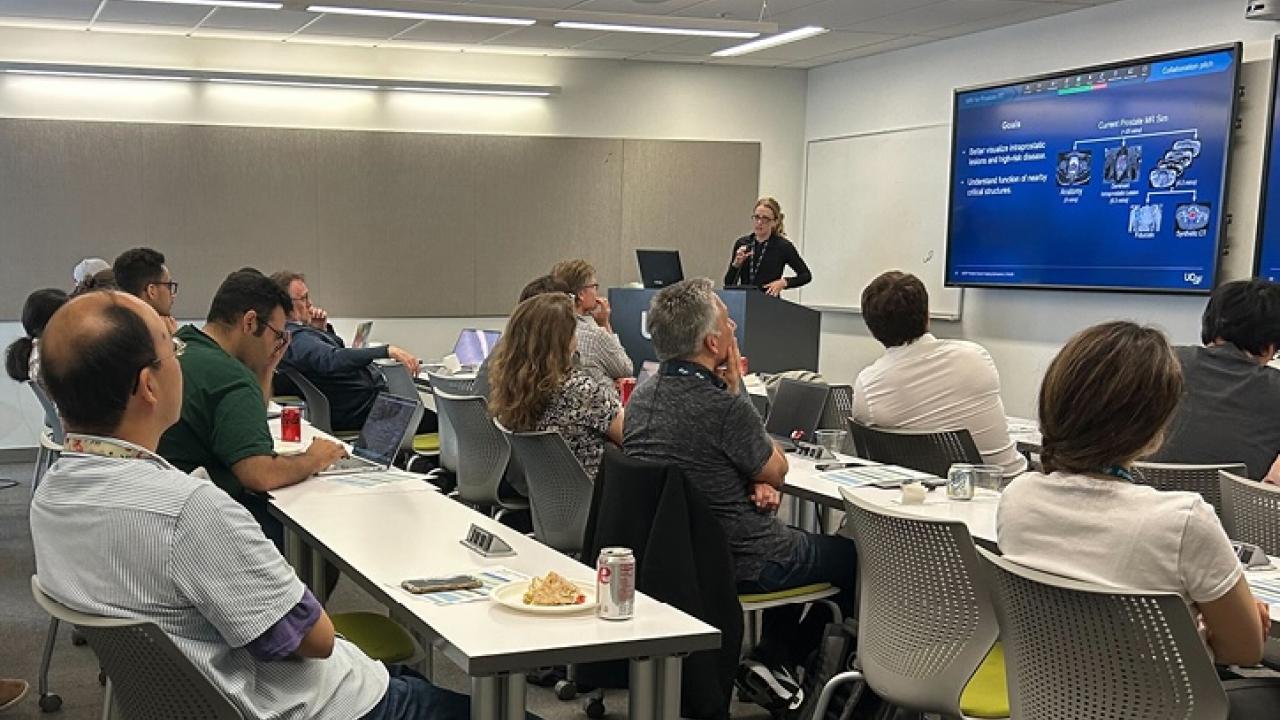
On October 8, the Body Imaging Research Group hosted the 2024 Prostate Cancer Imaging Symposium at UCSF. This event convened researchers developing and applying advanced imaging techniques to prostate cancer. Speakers included imaging scientists, informatics scientists, radiologists, nuclear medicine physicians, oncologists, and radiation oncologists who presented work on PET, SPECT, MRI, and theranostic agents, and applied them across the spectrum of prostate cancer progression from diagnosis to treatment of advanced disease. The hybrid event attracted over 50 attendees and sparked numerous discussions that will hopefully seed future collaborations.
Highlighted Presenters:
Organizer Peder Larson, PhD, said, “I continue to be impressed by work in the field of theranostics, where Drs. Hope and Flavell showed excellent work ranging from fundamental agent development to use of these methods in a clinical service.”
Drs. Scholey and Hong presented exciting use cases of MRI and PSMA PET for radiotherapy of localized and metastatic disease. There were clearly strong collaborations across radiation oncology, radiology, urology, and medical oncology driving innovations in this space. The arrival of proton therapy at UCSF, targeted for 2029, will also transform treatment of primary disease.
Dr. Noworolski showed how the use of detailed pathology results, progression results, and imaging biomarkers from diffusion, DCE, and spectroscopy can provide very strong predictions and cancer risk maps.
Hyperpolarized carbon-13 MRI showed promising results across the spectrum of prostate cancer, as presented by Drs. Bok and Vigneron, including disease identification and biopsy guidance, treatment response of localized disease, and treatment response of metastatic disease. Dr. Sriram showed how this technology was being used in co-clinical studies, where preclinical patient-derived xenografts are used to better understand and support clinical studies.
Multiparametric MRI has become a clinical standard for early assessment of disease, and Dr. Vigneron also showed how he and others at UCSF, particularly emeritus professor John Kurhanewicz, played a huge role in developing mpMRI methods.